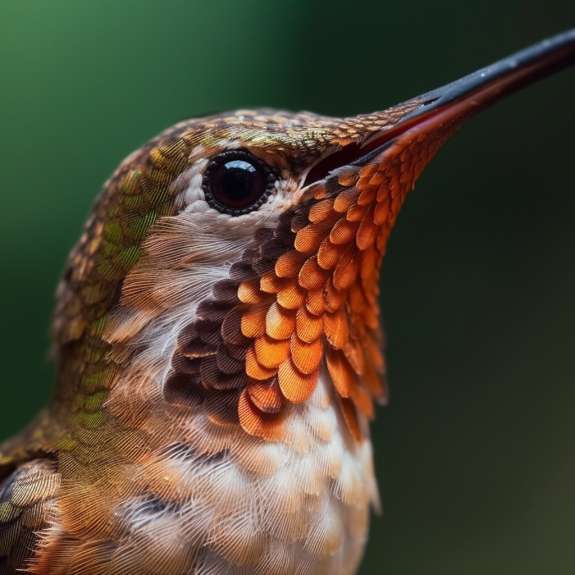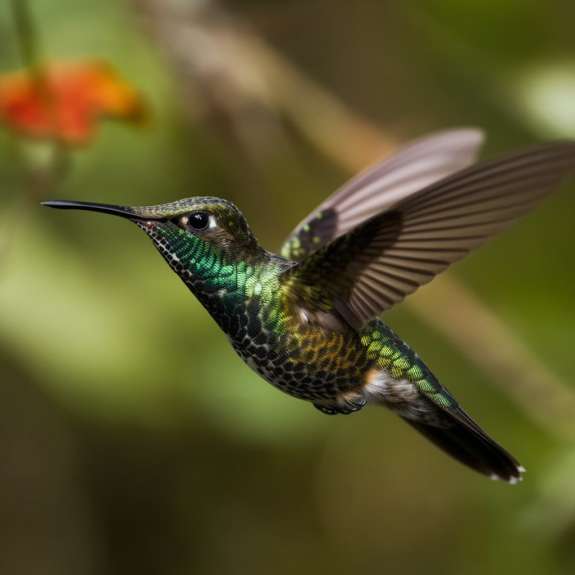Do Hummingbirds Have Teeth? A Fascinating Dive into Avian Dentistry
Have you ever found yourself staring in awe at a hummingbird’s incredible agility and mesmerizing beauty, wondering if these tiny creatures have teeth? In this intriguing blog post, we’ll embark on an avian adventure, exploring the secrets of hummingbird biology. Join me, and let’s unravel the mystery behind those bejeweled birds!
Hummingbirds do not have teeth in the traditional sense, but some species have beak serrations that resemble teeth. These serrations are used for catching insects and fighting other hummingbirds.
Do Hummingbirds Have Teeth?
Hummingbirds are tiny, delicate creatures that flit from flower to flower, their wings beating furiously as they hover in mid-air. They are known for their long, slender bills, which they use to sip nectar from flowers. But do hummingbirds have teeth?
In this section, I’ll take a closer look at the remarkable anatomy of hummingbirds.
Related Post: Do Birds Dream?
1. The Hummingbird Anatomy

Hummingbird beaks are an evolutionary marvel. We’ll delve into their various functions, from feeding to courtship, and investigate the absence of teeth in their beaks.
One of the most intriguing features of hummingbirds is their tongue. We’ll discuss how it’s perfectly adapted for nectar collection and its role in their diet.
Get ready for a jaw-dropping revelation as we explore the hummingbird’s skull and learn why it lacks the space for teeth. You won’t believe what you’ll discover!
2. Do Hummingbirds Have Teeth?

No, hummingbirds do not have teeth in the traditional sense. Birds do not have teeth at all. Instead, they have a beak made of keratin, the same material that makes up our hair and nails. Beaks come in all shapes and sizes, and they are adapted to each bird species’ specific diet and lifestyle.
Hummingbirds have long, slender beaks ideally suited for sipping nectar from flowers. Their beaks are also very flexible, allowing them to reach deep flowers and extract the nectar.
Some species of hummingbirds, such as the tooth-billed hummingbird, have beaks with tiny serrations that resemble teeth. These serrations can be used for catching insects and fighting other hummingbirds.
Even though hummingbirds do not have teeth, they are still very good at eating insects. They have a long tongue that they can use to dart out and catch insects in mid-air. They can also use their beaks to pluck insects from leaves and flowers.
Hummingbirds are fascinating creatures, and their beaks are just one of the many things that make them unique.
3. Hummingbird Diet and Feeding

Let’s dive deeper into the hummingbird’s dietary habits and feeding techniques.
We’ll uncover the secrets of hummingbirds’ primary food source – nectar. Learn how they obtain this sweet elixir and what keeps them returning for more.
Hummingbirds need more than just sugar to thrive. We’ll explore their unexpected source of protein and how they capture insects mid-flight.
Despite the absence of teeth, hummingbirds have ingeniously maintained their beak’s cleanliness. We’ll reveal the role of grit in their oral hygiene.
Evolutionary Wonders of Hummingbirds
Hummingbirds have been around for millions of years. Discover the fascinating evolutionary adaptations that have shaped these marvelous creatures.
Surprisingly, hummingbirds do have toothed ancestors. We’ll journey back to uncover their dental legacy and why they lost their teeth.
The evolution of the hummingbird’s beak is a captivating story. We’ll examine how it adapted to suit their feeding habits and lifestyle.
See More: How to Get Birds Out of House Walls?
The Marvel of Hummingbird Flight

In this section, I’ll explore the incredible capabilities of hummingbird flight and the importance of lightweight bones.
Get ready to be amazed by the physics behind hummingbird flight. We’ll discuss their hovering, acrobatics, and the astounding speeds they reach.
We’ll uncover the importance of lightweight bones in hummingbird physiology and how it contributes to their exceptional flying skills.
The Hummingbird’s Reproduction
Let’s switch gears and explore the fascinating hummingbird courtship and reproduction world.
You won’t believe the intricate and sometimes humorous courtship rituals hummingbirds engage in. We’ll explore their unique displays and dances.
Learn about the incredible care and effort hummingbird parents invest in raising their young. You might be surprised by their parenting skills!
FAQs: Unearthing More Hummingbird Secrets
How do hummingbirds chew their food without teeth?
Hummingbirds don’t chew their food like we do. They rely on their incredibly muscular and agile tongues to lick nectar and specialized beaks to catch insects. Their digestive system does the rest!
Do all hummingbird species lack teeth?
Yes, all hummingbird species have evolved to be toothless. However, some of their ancient ancestors did have teeth.
Why are hummingbirds so tiny, and how does it benefit them?
The small size of hummingbirds reduces their weight, making it easier for them to hover in place and perform their breathtaking aerial acrobatics. Their size also allows them to access nectar from tiny flowers with ease.
Conclusion: A Toothless Wonder of Nature
In this engaging journey, we’ve answered the question: do hummingbirds have teeth? The truth is that these remarkable creatures have evolved to thrive without teeth, relying on unique adaptations to conquer life’s challenges.
Whether you’re a bird enthusiast or just someone who appreciates the wonders of nature, hummingbirds never cease to amaze. Their agility, flight, and dietary habits make them truly remarkable. So, next time you spot a hummingbird, remember this blog post and marvel at their toothless yet fantastic existence!




